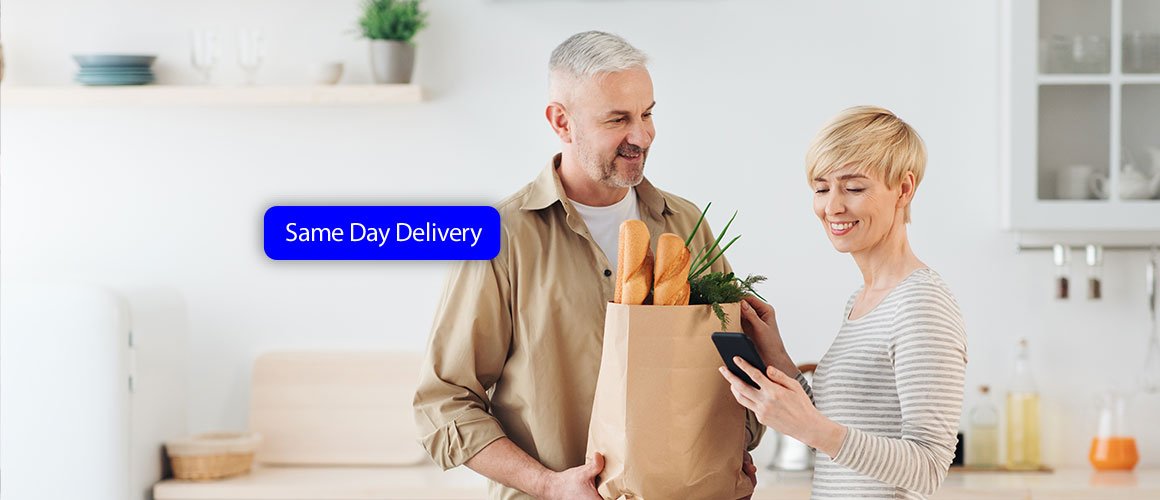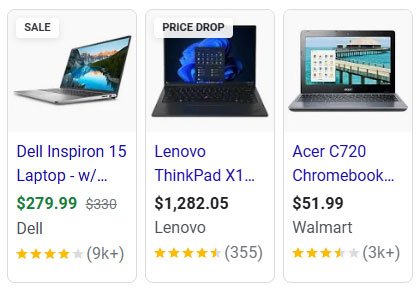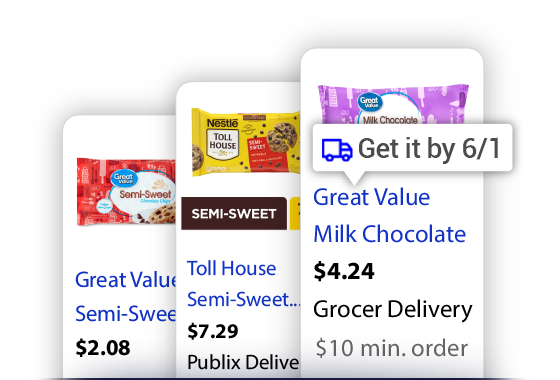
How to Leverage Classic PLAs, Local Inventory Ads, and Regional Availability and Pricing to Maximize Your Reach on Google Shopping
Clients use VersaFeed to publish their product data on Google through one of three primary methods, each with its own technical requirements, ad formats, and approaches to reaching customers. Let's review them:
- Classic Product Listing Ads (PLA): Used when there’s a single price, and the item is typically shipped nationwide.
- Local Inventory Ads (LIA): For brick-and-mortar stores, LIA ads help drive in-store visits.
- Regional Availability and Pricing (RAAP): Designed for companies with complex distribution centers or variable pricing rules.
Let’s dive into each of these ad styles!
Product Listing Ads (PLA)
Classic PLAs are the foundational Google Shopping ad, widely popular since around 2012. You’ve likely seen them:

These ads have a high ROI because they:
- Target shoppers deep in the buying process (close to purchase)
- Pre-qualify buyers by showing an image, title, and price before the click
Over the last decade, these ads have essentially replaced traditional “text” ads for eCommerce.
While all three ad types (PLA, LIA, RAAP) look similar on the surface and have high ROI—the key differences lie in the ad logic and targeting. Classic PLAs face limitations in the following areas:
- Lack of in-store targeting for brick-and-mortar retailers
- Uniform pricing across regions, which may not reflect local price differences
- Limited support for complex shipping restrictions, such as for alcohol or large furniture
These challenges led to the development of additional ad styles.
Local Inventory Ads (LIA)
Introduced in 2014, Local Inventory Ads (LIA) ads are designed for businesses with physical locations. These ads don’t focus on online purchases but instead highlight that a product is “in stock nearby,” encouraging the user to purchase in-store by providing an address and directions.

LIA ads trigger only for users within a specific geographic radius of a store, making them ideal for time-sensitive purchases like groceries or “need it now” items (e.g., a phone charger). These ads bridge the gap between digital searchers and in-store foot traffic.
Regional Availability and Pricing (RAAP)
RAAP ads, introduced in 2021, are perfect for products that will be delivered, rather than bought in-store. Unlike PLAs, RAAP ads accommodate more complex logistics, such as perishable goods, heavy items, or products with legal shipping restrictions.
RAAP ads allow merchants to adjust product availability and pricing based on the delivery location, addressing key challenges for:
- Merchants with variable pricing by region (e.g., lower prices for dairy in Wisconsin vs. New York City)
- Businesses with complex delivery logistics (e.g., large furniture retailers that only deliver within specific regions)
RAAP ads may highlight delivery details like “Same Day Delivery.” Here’s an example:

RAAP is commonly used for delivery via in-house drivers or services like Instacart, rather than traditional shipping carriers like FedEx.
Conclusion
In this article, we explored three types of Google Shopping ads:
- Classic PLA: Ideal for nationwide shipping and consistent pricing.
- LIA: Targets local, in-store shoppers.
- RAAP: Tackles complex delivery and pricing challenges for regional merchants.
VersaFeed has deep expertise in configuring these ad formats and optimizing feeds. Contact us today to discover the best approach for maximizing your Google Shopping visibility!
Request Consult